The Culemborg railway bridge on these postcards was the first bridge across the river Lek and was demolished in 1983.
The first bridge on this site was built between 1863 and 1868, during the construction of the Utrecht - Boxtel railway, also known as Staatslijn H. On November 1, 1868, the Utrecht-Kuilenburg section was put into service. This railway was built by law at the expense of the State. A decision to this effect was taken in 1860. The construction of the railway and the design of the bridge was in the hands of engineer Gerrit van Diesen.
This first bridge was a real industrial building: in order not to hinder shipping, there were no piers in the river, so the main span was 154 meters long. When it opened in 1868, this was the railway bridge with the longest span in the world.
The construction of this bridge marked a breakthrough for the construction of railway bridges over the major rivers in the Netherlands. Strengthened by this success, they dared to build the Moerdijk Bridge, which was opened in 1872. The old swing bridge at Westervoort was replaced in 1901 by a new bridge that closely resembled the Kuilenburg railway bridge.
The first bridge was designed for two tracks, although the Staatslijn was originally only single track. The track was therefore also in the middle of the bridge. In 1885 a second track was built on the bridge. One of the two tracks was broken up in World War II. The German occupiers placed wooden planks on the site of this track, so that road vehicles could also be driven over the bridge. Although the German occupiers had placed explosives at and on the bridge, they were not detonated, as with many other bridges during the German retreat. As a result, the bridge at Culemborg was one of the few large Dutch bridges that survived the Second World War virtually unscathed.
Although it was initially planned to make the bridge as a lattice bridge, a new bridge type was devised consisting of multiple trusses. The main beams of the bridge were made of welded iron, because there was little experience with steel. The crossbeams and wind bracing were made of steel. The substructure was built for 1.5 million by the company Quant, the superstructure by the company Harkort for ƒ 1.8 million. 5100 tons of iron was processed in the entire bridge, the main span had a weight of 2300 tons.
In 1983 the bridge was demolished and replaced by a modern steel arch bridge, with concrete bridges. A small part of the original bridge has been placed next to the new bridge as a monument. One of the reasons for replacing the bridge was the increased design load. In addition, the connections on the bottom edge were vulnerable to fatigue and rust damage was noted.
fully handcoloured picture postcards
published by A.H. van Dam in Culemborg in 1913:
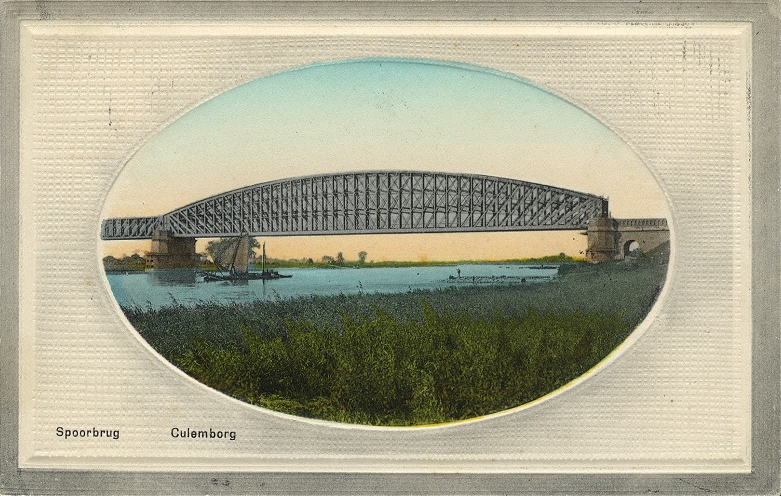
published by A.H. van Dam in 1921:
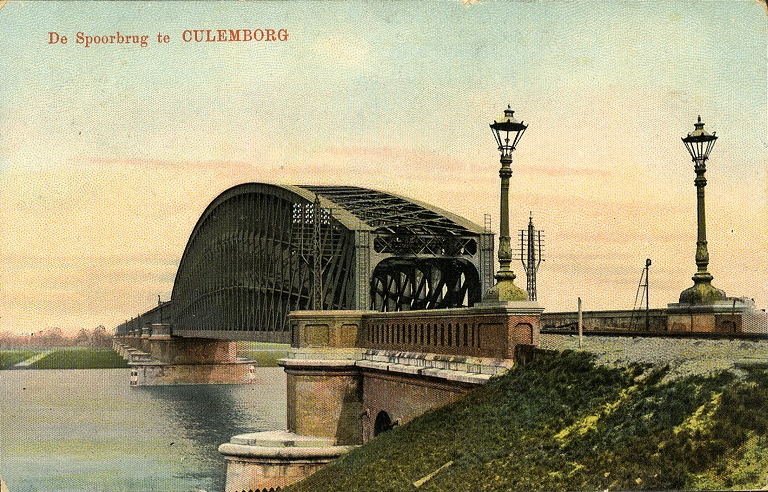
published Goedkoope Bazar in Culemborg:
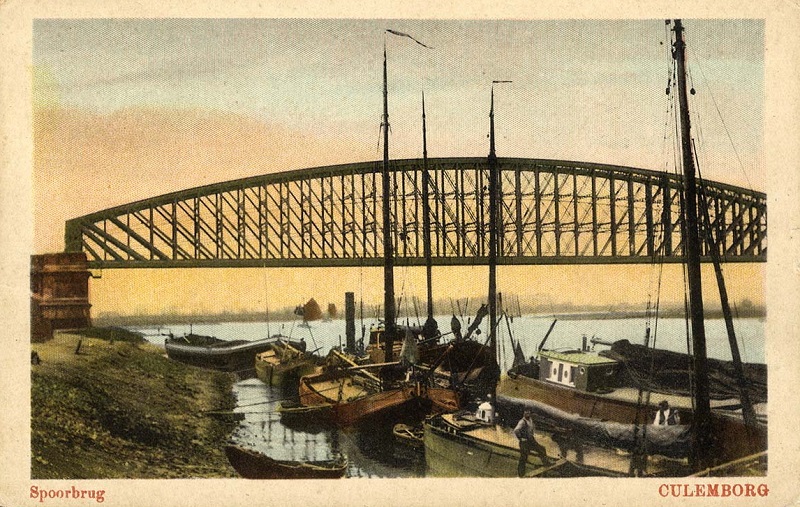
published by A.H. van Dam:
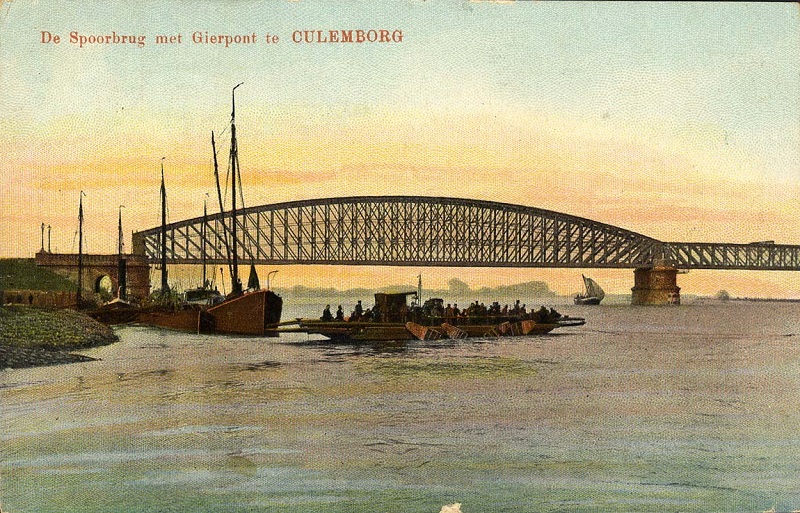
published by Blom & Olivierse:
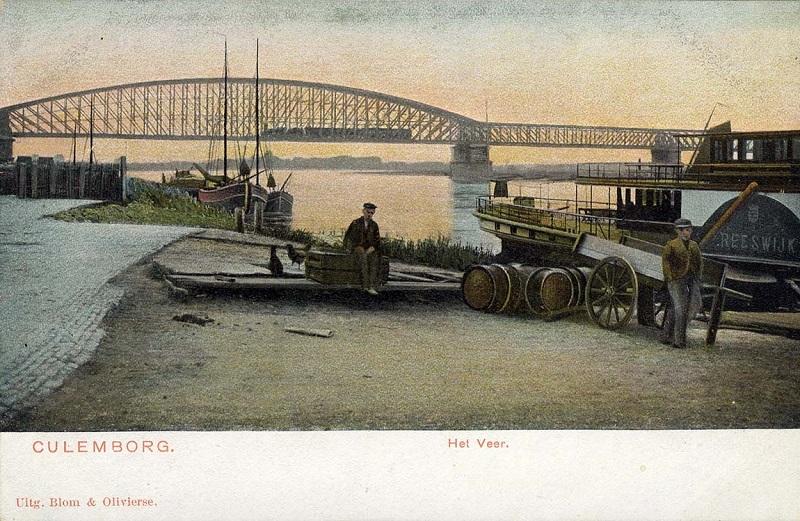
published by Emrik & Binger in Haarlem:
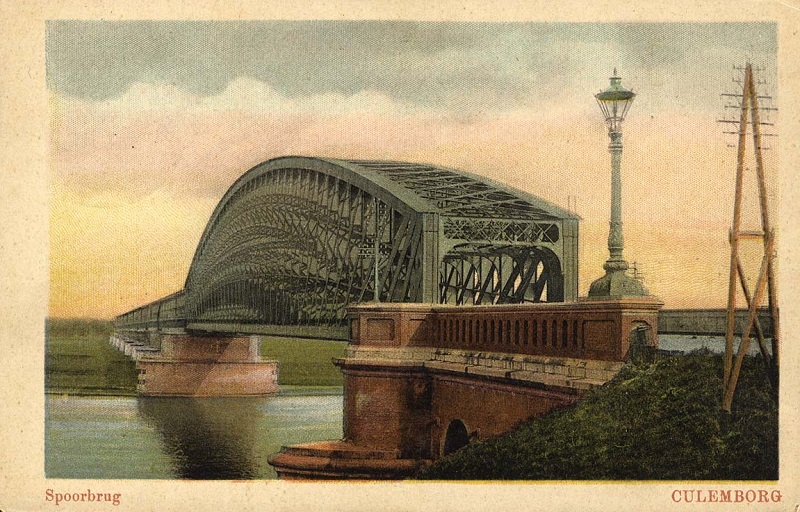
published by factory make TULP:
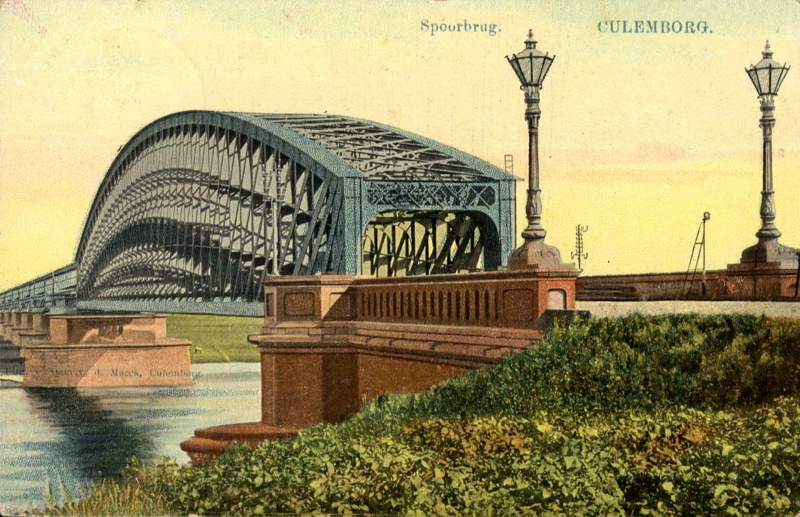
published by Brinio in Rotterdam in 1926:
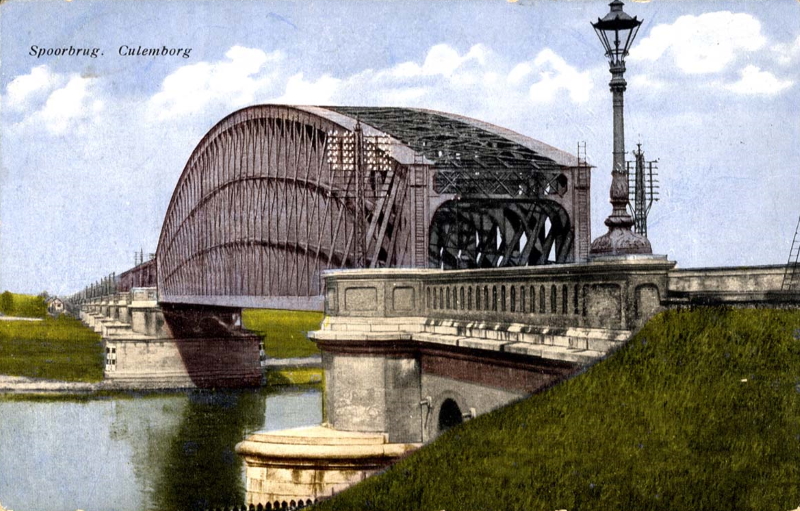
published by Blom & Olivierse:
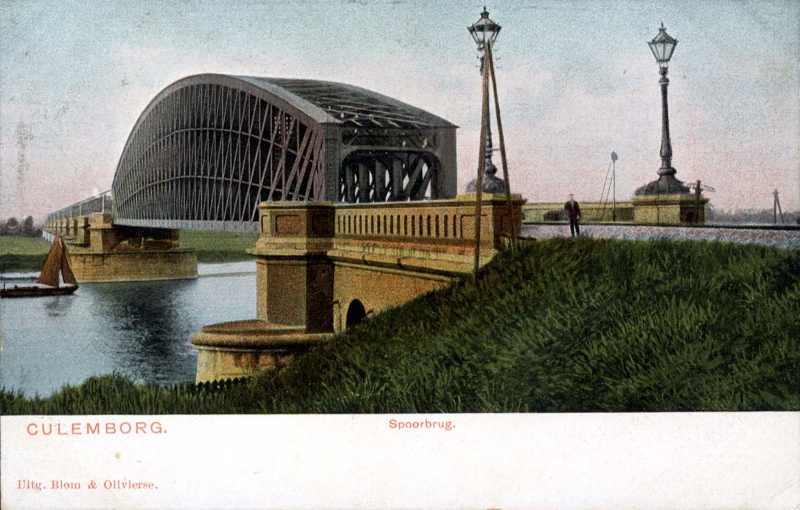
published by Trenkler & Co. in Leipzig:
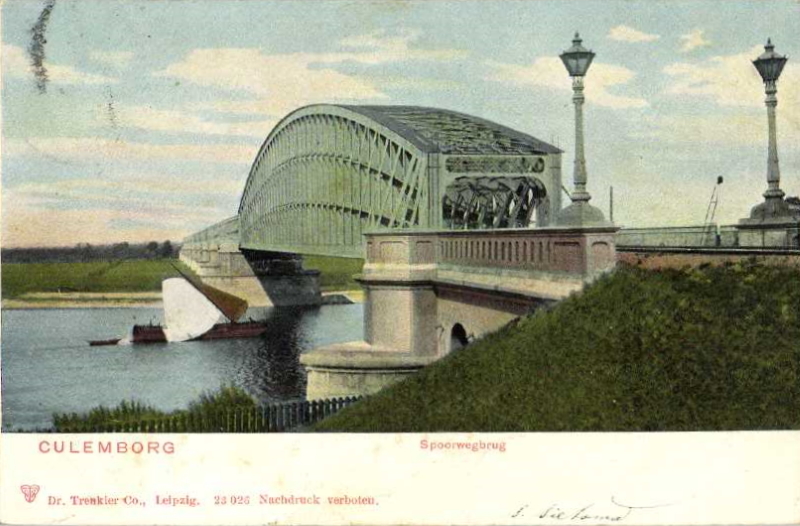

sepia coloured picture postcards
unknown publisher:
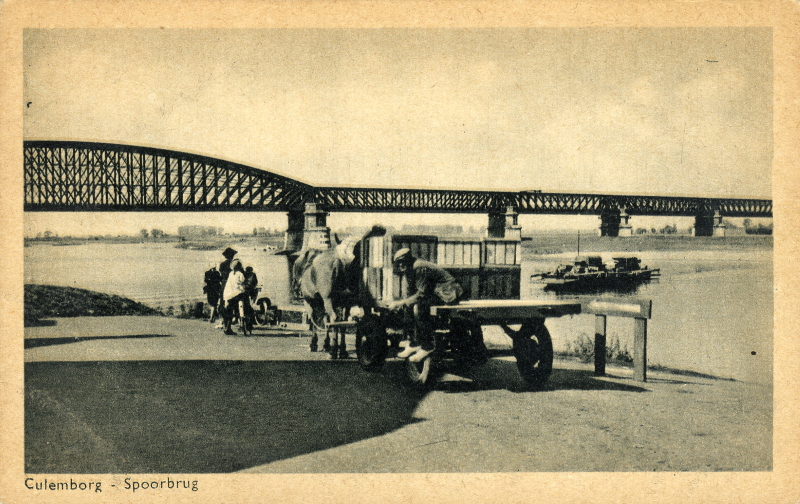
published by F. Dalstra in Culemborg:
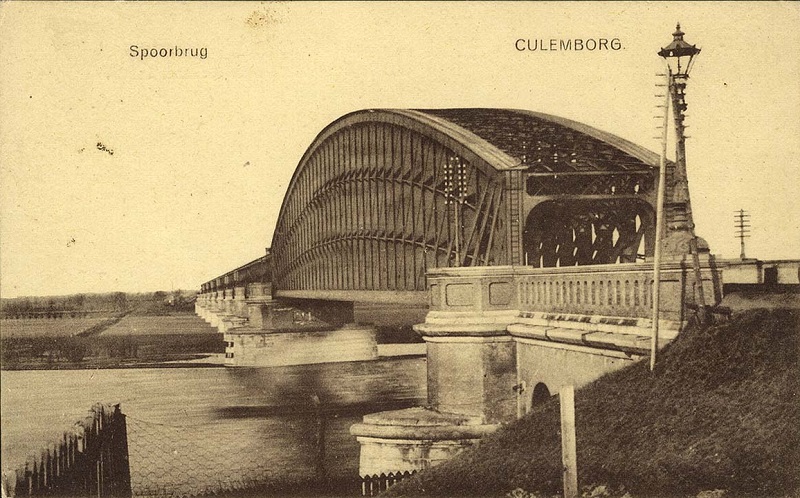
published Goedkoope Bazar in Culemborg:
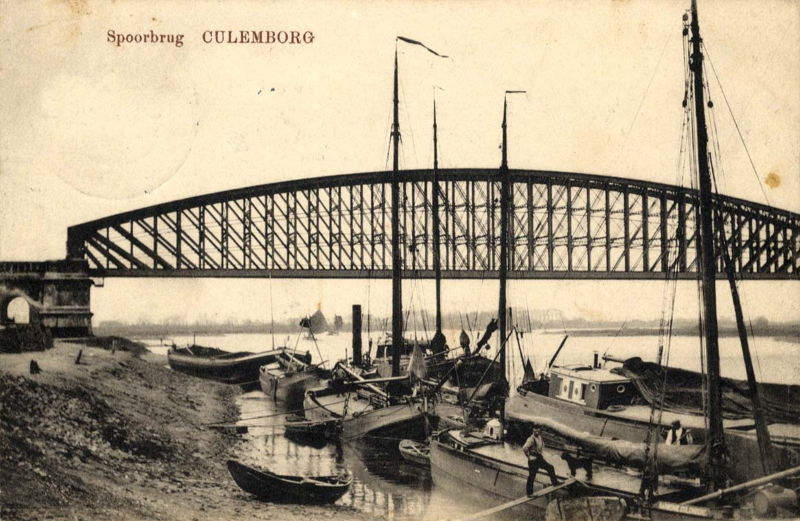
published by J.E. van Beest in Culemborg in 1930:
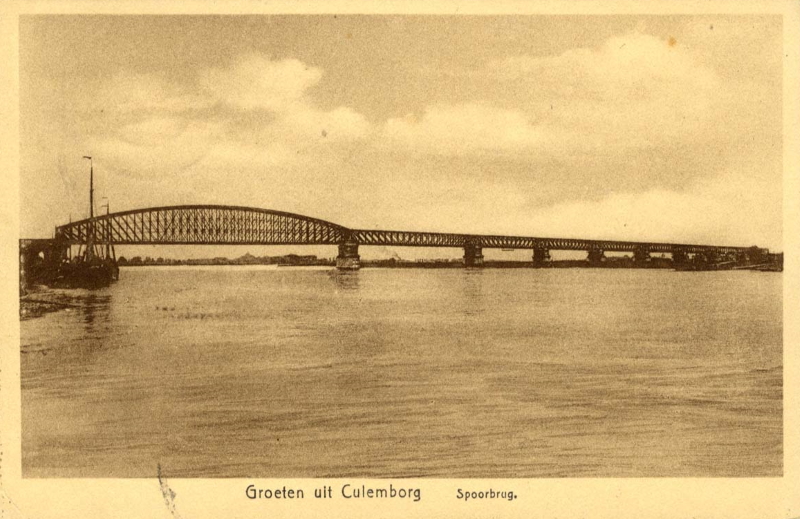
published by book shop H.H. Boldingh in Culemborg in 1922:
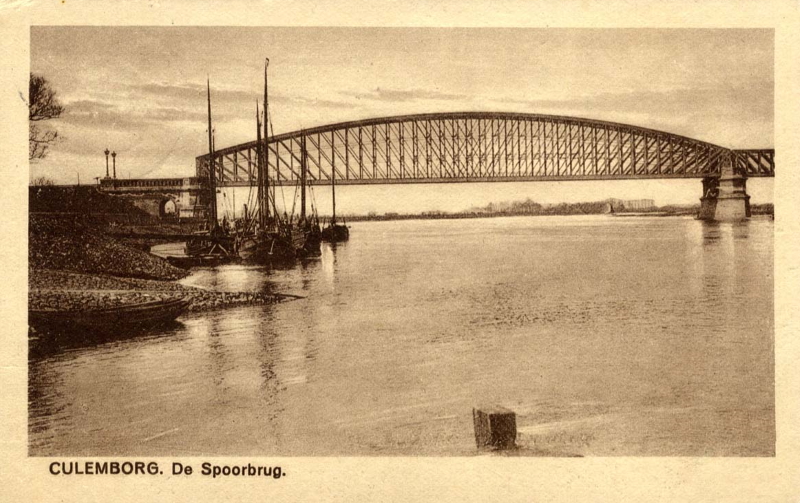
unknown publisher (1932):
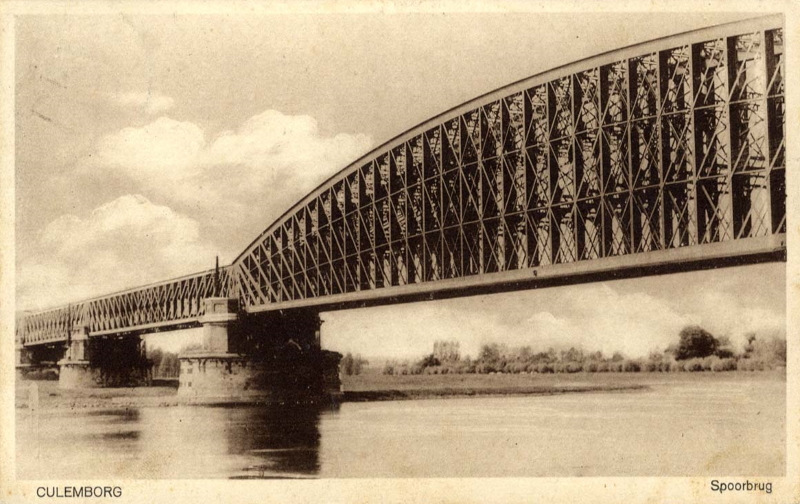
published by book shop H.H. Boldingh in Culemborg:


black and white picture postcards
published by A.H. van Dam in Culemborg in 1934:
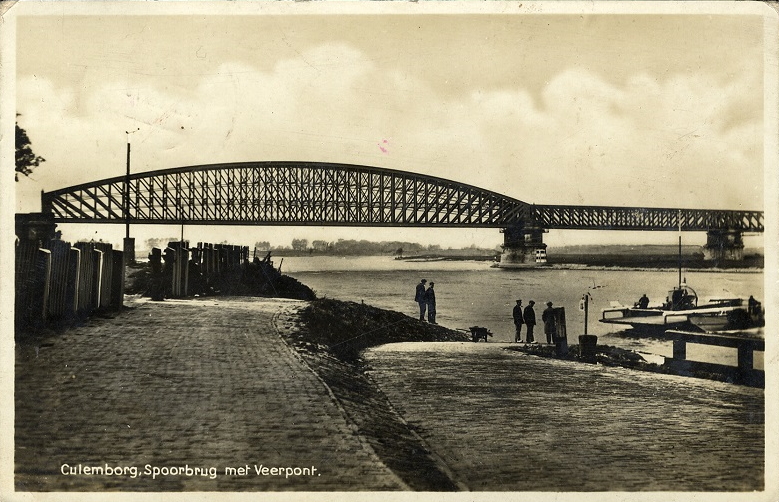
published by A.H. van Dam in Culemborg in 1919:
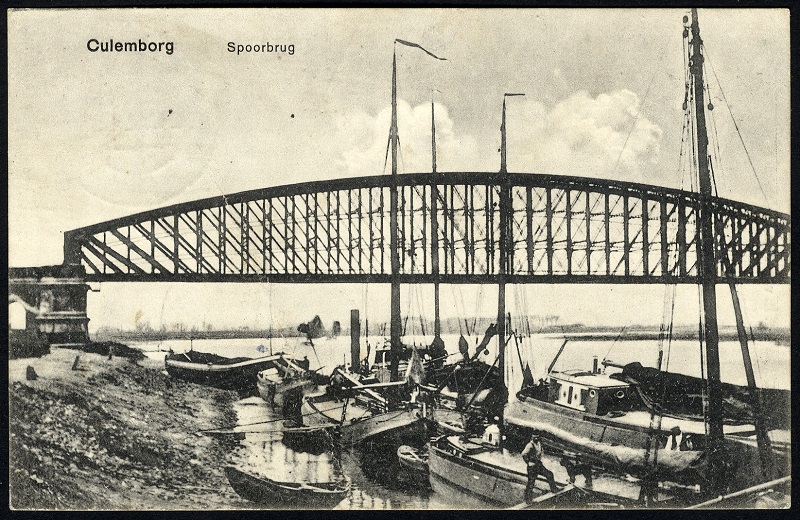
published by Th. van Avezaath in Culemborg:
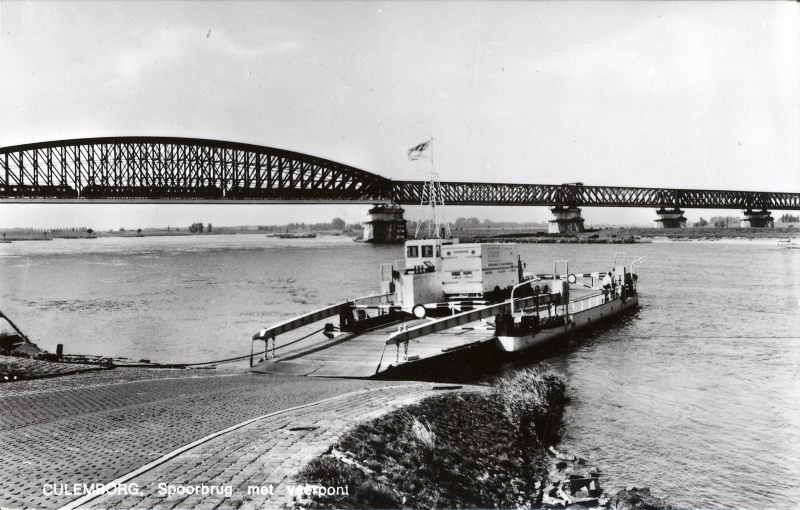
published by book shop H.H. Boldingh in Culemborg:
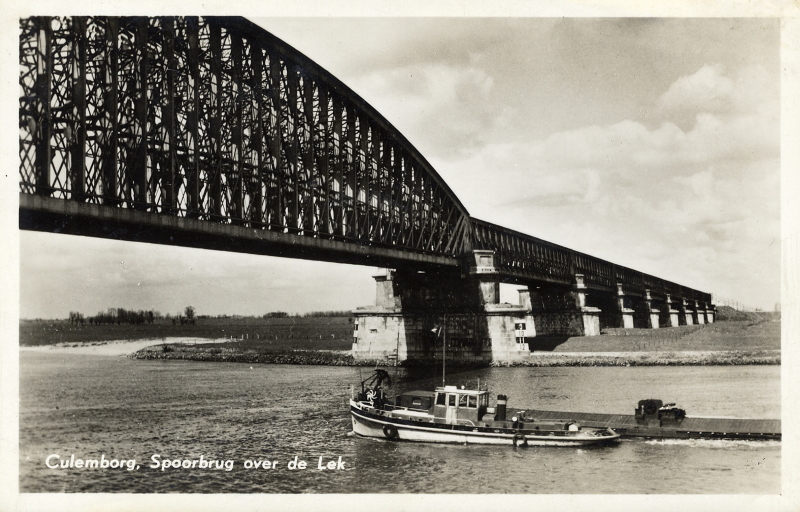
published by A.H. van Dam in Culemborg:
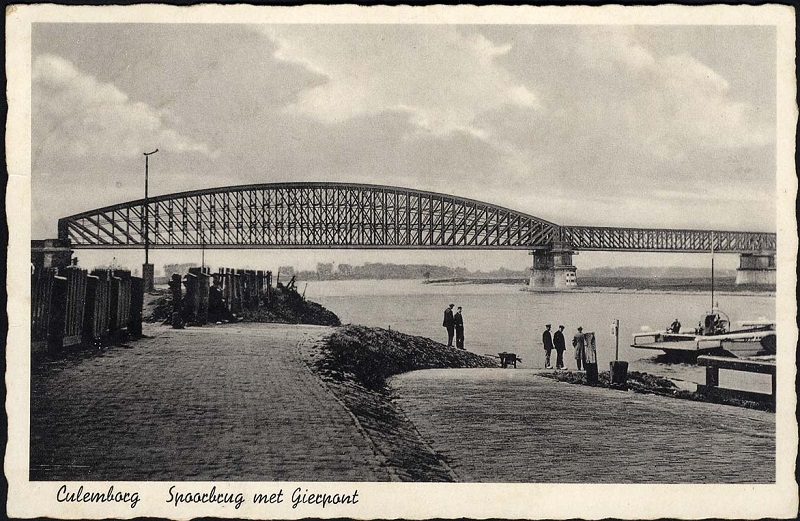
published by Sparo:
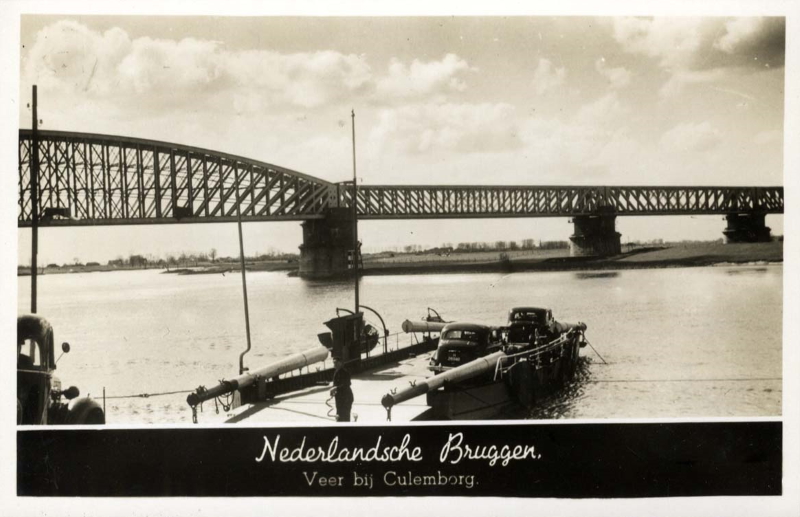
published by book shop H.H. Boldingh in Culemborg:
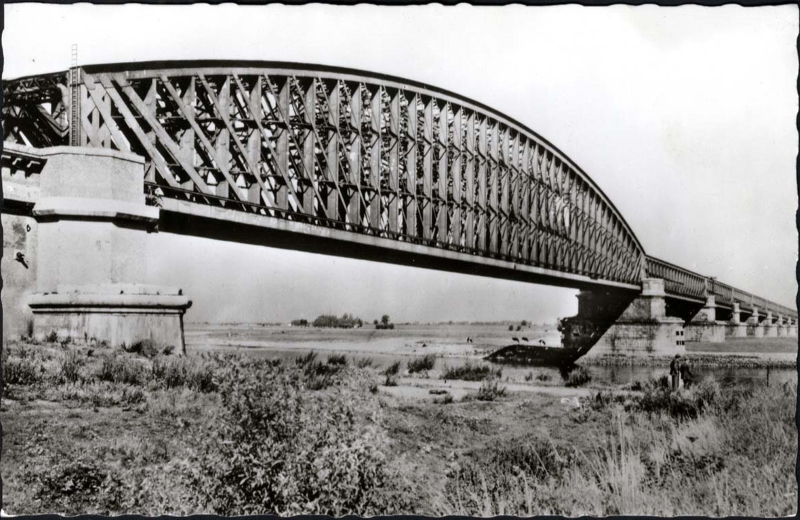
published by Okhuizen in Culemborg:
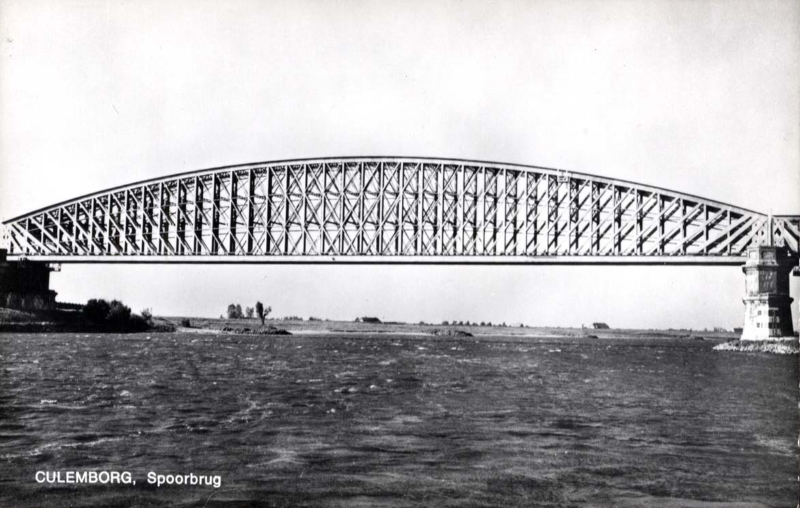
published by Cigar shop B.E. Collé in Culemborg:
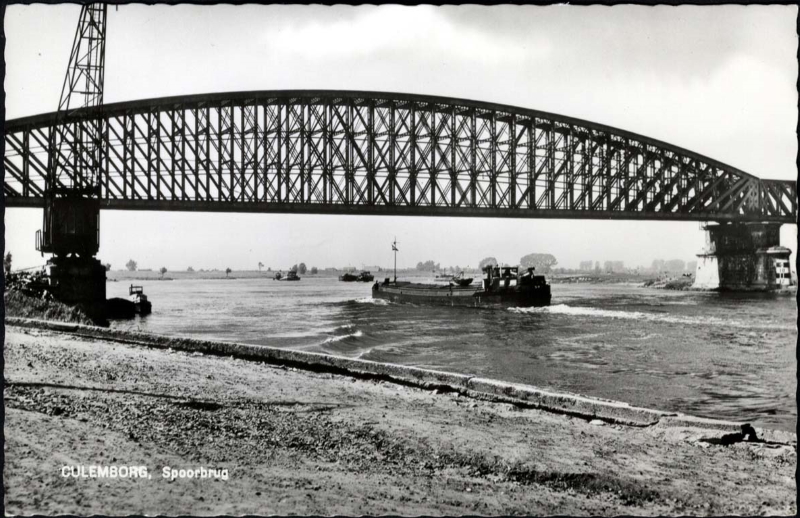
published by JosPe in Arnhem in 1950:
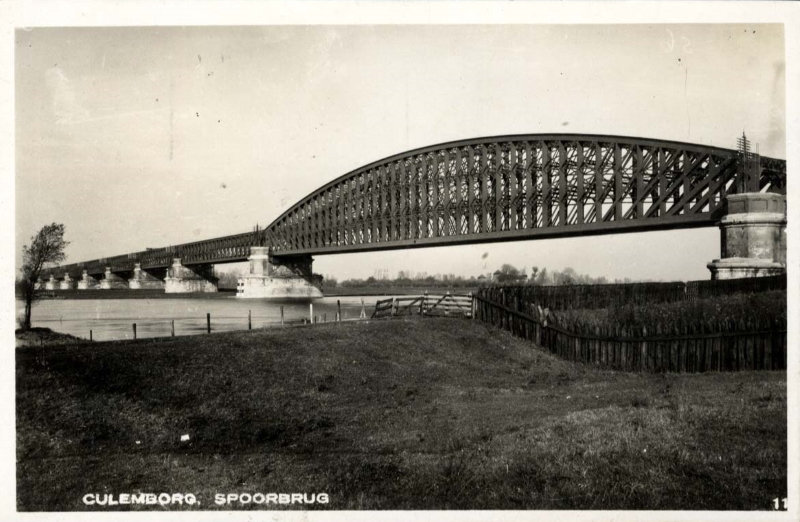
published by shop "Poort der geschenken" Kramer-Freher in Culemborg in 1938:
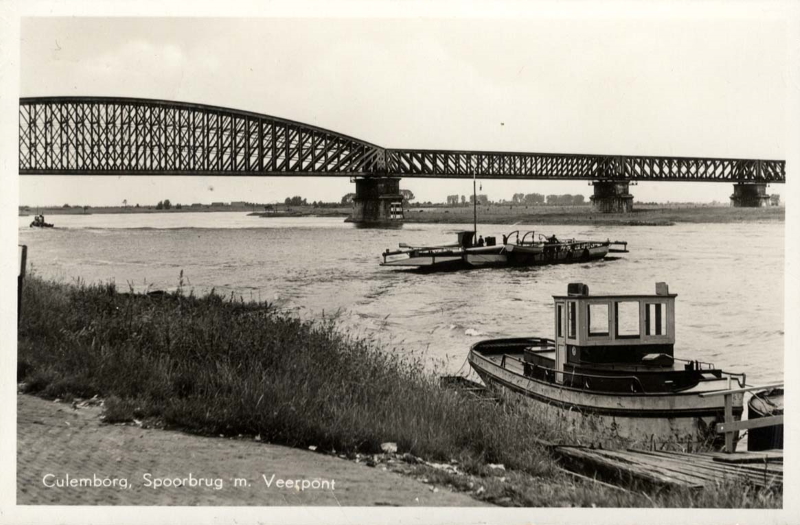
published by magazine shop KUIFJE in Culemborg:
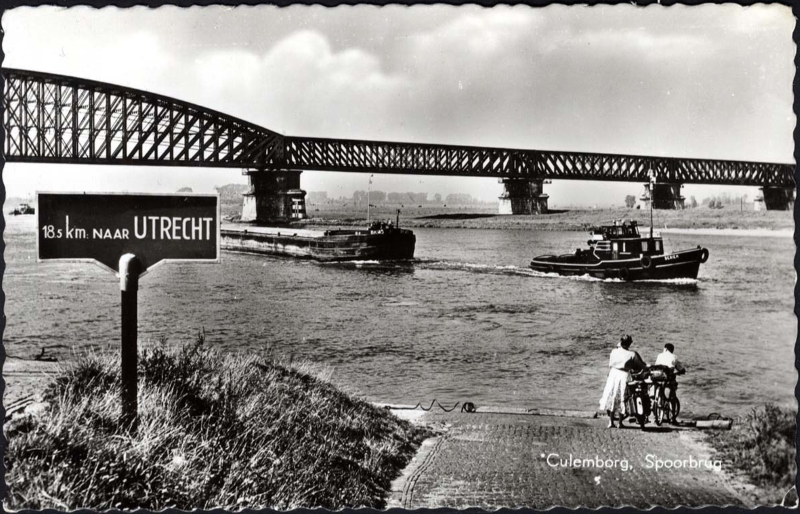
published by Okhuizen in Culemborg:
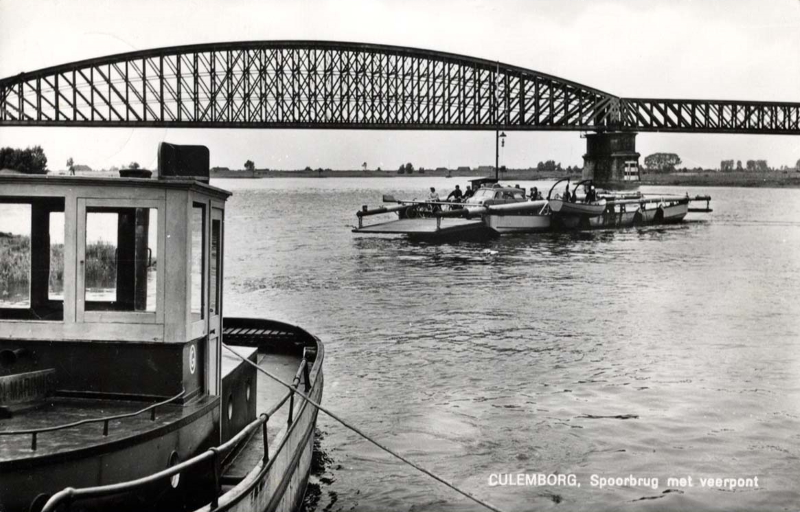
published by Toy Shop Kramer-Freher in Culemborg:
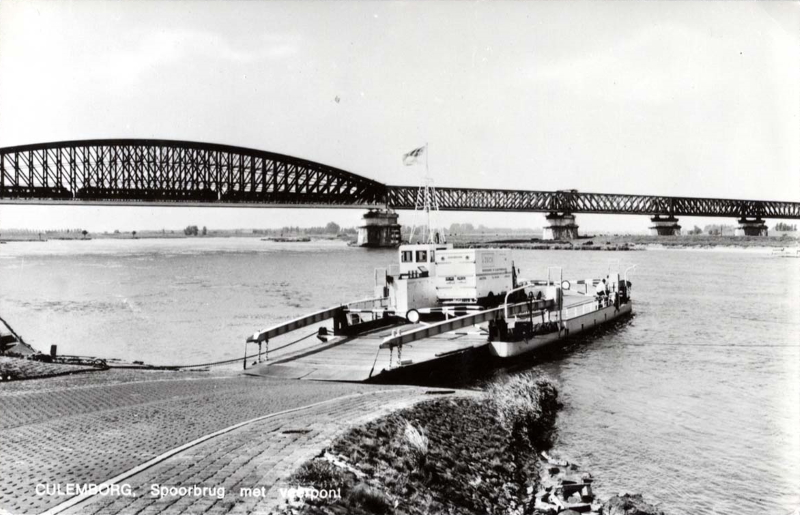
published by book shop H.H. Boldingh in Culemborg:
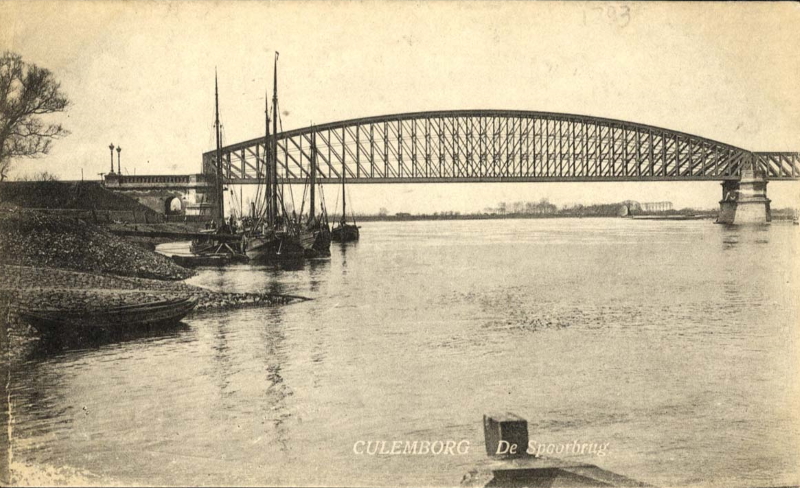
published by Th. van Avezaath in Culemborg:
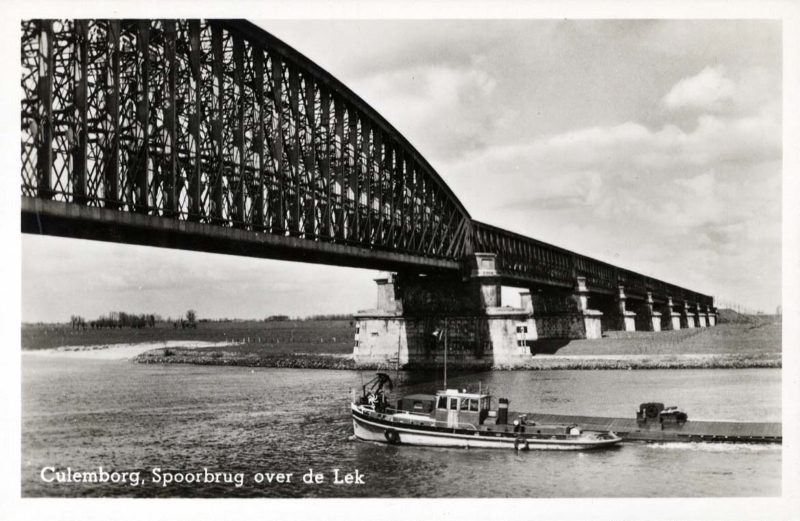

|
